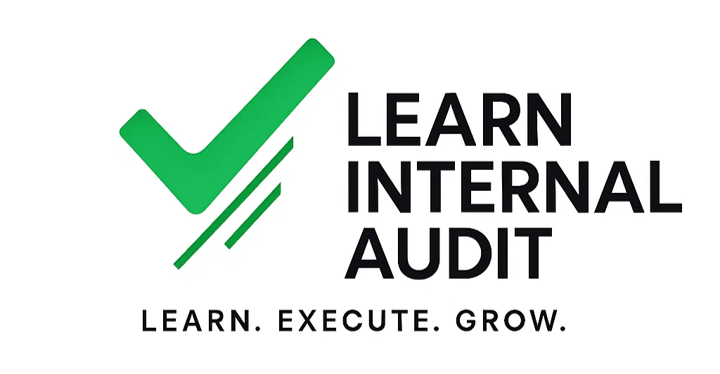If you’re preparing for an internal audit role at a Big Four firm (EY, Deloitte, KPMG, PwC) or a top corporate, be ready, the interview will likely dig deep. The internal audit interview questions won’t just test your memory of the audit lifecycle. It’ll test how you think, how you evaluate risk, how well you understand controls and whether you know what it means to truly add value as an auditor.
We surveyed more than 30 interviewers to collate the most common (and difficult) internal audit interview questions they ask that focus on technical depth, critical reasoning, and real-world understanding.
1. How do you identify and assess risks in a business process?
What they’re looking for: Whether you understand risk as more than a theoretical concept. Can you tie it to process steps, controls, and objectives?
You should cover:
- Understanding the business objectives first
- Mapping the process (walkthroughs, SOPs, interviews)
- Asking “what can go wrong” at each step
- Categorizing risks (Operational, Compliance, Financial, Reputational)
- Rating likelihood vs. impact (risk heat map)
Expected follow-up question:
“Can you give an example of a high-risk control failure you’ve seen, and how it impacted the business?”
2. What’s the difference between a control deficiency, a significant deficiency, and a material weakness?
This tests: Your grasp on control evaluation and reporting standards, especially if you’ve worked under SOX/ICFR frameworks.
You should know:
- Control Deficiency: Failure in design or operation of a control that does not prevent or detect a misstatement in a timely manner.
- Significant Deficiency: Less severe than material weakness, but important enough to merit attention by those charged with governance.
- Material Weakness: A deficiency (or combination) such that there is a reasonable possibility that a material misstatement will not be prevented or detected.
3. How do you test the design and operating effectiveness of a control?
Expected answer structure:
Design Effectiveness Testing:
- Understanding the control’s objective
- Validating whether it can reasonably prevent or detect errors
- Checking documentation, flowcharts, control owner knowledge
Operating Effectiveness Testing:
- Period under review
- Sampling approach (statistical vs. judgmental)
- Reviewing control evidence
- Re-performing the control (if applicable)
Tip: Be ready to talk about frequency-based testing (daily, monthly, etc.) and what to do when exceptions arise.
4. What are the elements of a good internal audit finding?
Ideal structure:
- Condition (What is happening?)
- Criteria (What should be happening?)
- Cause (Why is it happening?)
- Effect (What’s the impact?)
- Recommendation (What should be done?)
You may also be asked to write a finding or revise one live in an interview, be prepared to make it concise and risk-focused.
5. How would you audit a Purchase-to-Pay (P2P) cycle?
Break it down by sub-process:
- Vendor onboarding
- Purchase requisition and approval
- PO generation
- Goods receipt/3-way match
- Invoice processing
- Payment authorization
Then talk about:
- Key risks (e.g., duplicate payments, unauthorized purchases)
- Key controls (e.g., segregation of duties, system validations)
- Sample tests and data analytics (e.g., PO vs invoice mismatches)
This is a favorite among Big 4s.
6. Explain the difference between preventive and detective controls. Give examples.
Preventive: Designed to stop errors/fraud before they occur.
E.g., system-enforced purchase approval workflows
Detective: Identify errors after they happen.
E.g., reconciliation between ledger and bank statements
Be prepared to also categorize controls as manual, automated, or IT-dependent.
7. What is a Risk Control Matrix (RCM), and how is it used?
RCM includes:
- Process & subprocess
- Risks (linked to objectives)
- Controls (with description and control owners)
- Frequency & control type
- Test of Design (ToD) and Test of Effectiveness (ToE) approach
Show that you’ve worked on one, or at least understand how it links planning to fieldwork.
8. How do you determine sample size for control testing?
Be ready to speak about:
- Risk-based sampling
- Frequency of control operation (e.g., monthly vs. daily)
- Statistical methods (if applicable)
- Guidance under IIA or SOX (if relevant)
- Allowable exceptions and impact of errors
9. Can you walk us through how you prepare an internal audit report?
Talk through:
- Drafting issues during execution
- Root cause analysis
- Management discussion and validation
- Risk ratings and executive summary
- Tone of language: neutral, constructive
- Final review and presentation to stakeholders
Be ready to discuss how you deal with management pushback or disagreements on findings.
10. Have you ever discovered fraud or suspected it during an audit? What did you do?
Even if you haven’t, speak hypothetically and show maturity:
- Red flags (e.g., duplicate vendors, round number payments)
- Your responsibility: document, escalate, don’t accuse
- Adhering to professional ethics and company protocols
Other Internal Audit Interview Questions You Might Encounter:
- Explain the concept of the three lines of defense.
- What is the COSO framework and how do you use it?
- How do you differentiate between a process-level control and an entity-level control?
- What kind of data analytics have you used in audits?
- How do you ensure independence and objectivity in tough situations?
- What KPIs or metrics do you track post-audit?
Final Tip
Don’t just memorize terms. Think like an auditor. Link risks to controls, controls to objectives, and findings to impact. Practice explaining audit concepts in simple language, and keep your answers structured. Check out our insights page for some more food for thought.
And most importantly; stay calm, stay curious, and stay real. That’s what makes a great internal auditor.

